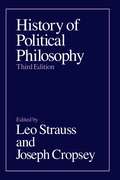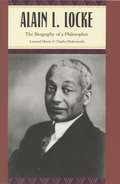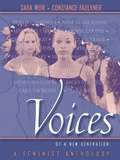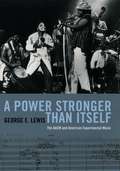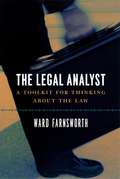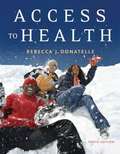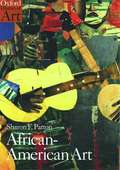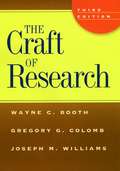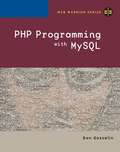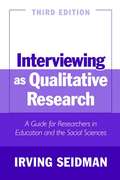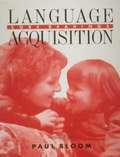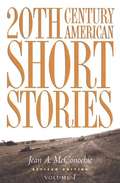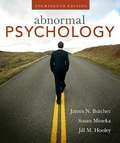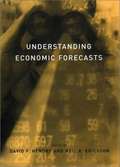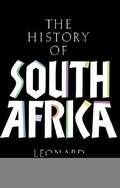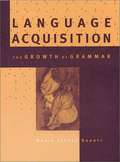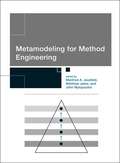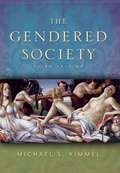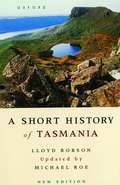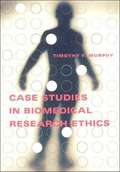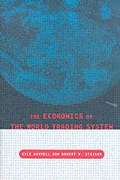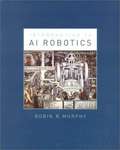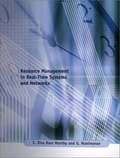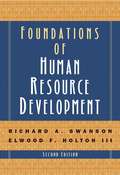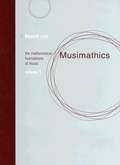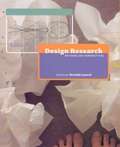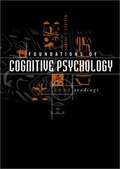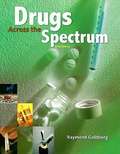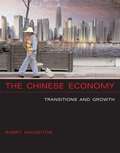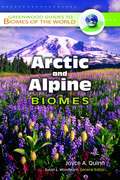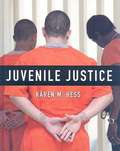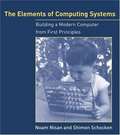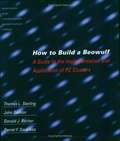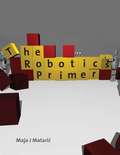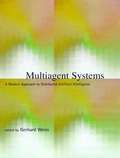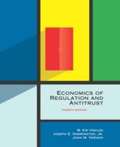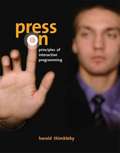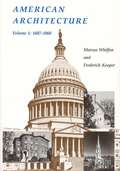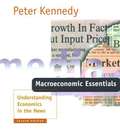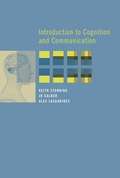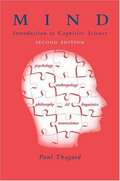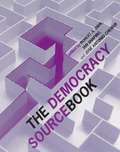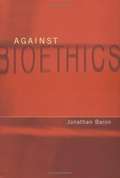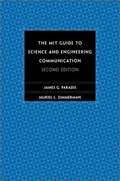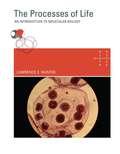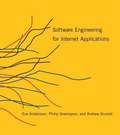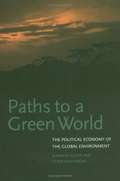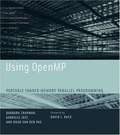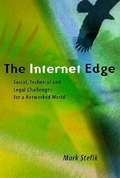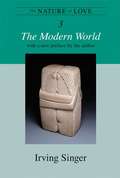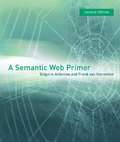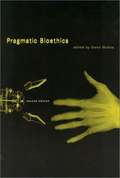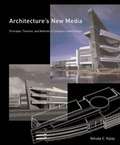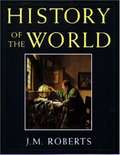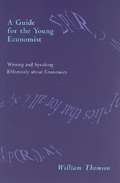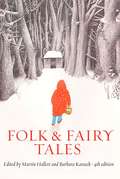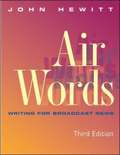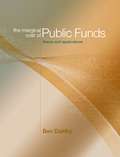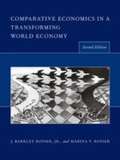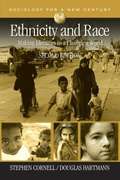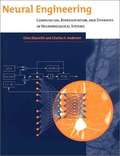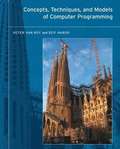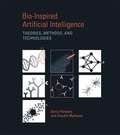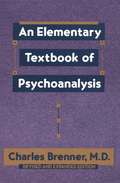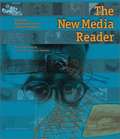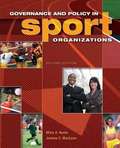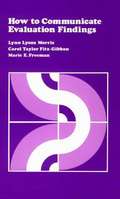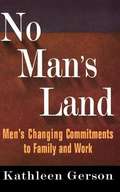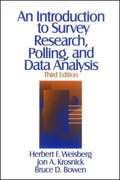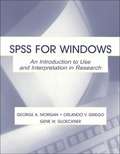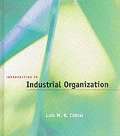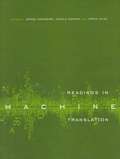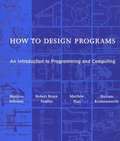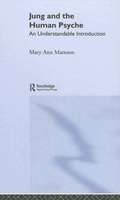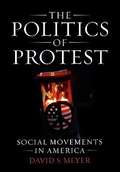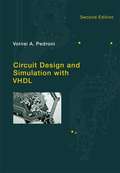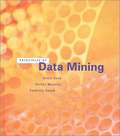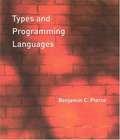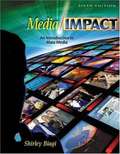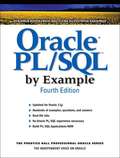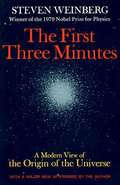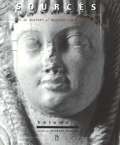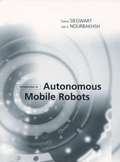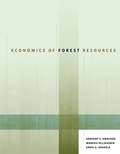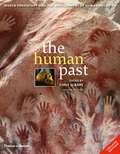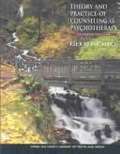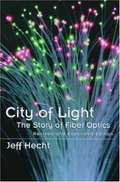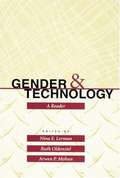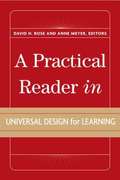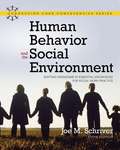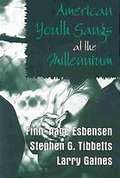- Table View
- List View
History of Political Philosophy (Third Edition)
by Leo Strauss Joseph CropseyWritten by specialists on the various philosophers, this third edition has been expanded significantly to include both new and revised essays.
Alain L. Locke: Biography of a Philosopher
by Leonard Harris Charles MolesworthAlain L. Locke (1886-1954), in his famous 1925 anthology "The New Negro", declared that "the pulse of the Negro world has begun to beat in Harlem". Often called the father of the Harlem Renaissance, Locke had his finger directly on that pulse, promoting, influencing, and sparring. Leonard Harris and Charles Molesworth trace Locke's story through his Philadelphia upbringing, his undergraduate years at Harvard and his tenure as the first African American Rhodes Scholar. The heart of their narrative illuminates Locke's heady years in 1920s New York City and his forty-year career at Howard University, where he helped spearhead the adult education movement of the 1930s and wrote on topics ranging from the philosophy of value to the theory of democracy. Harris and Molesworth show that throughout this illustrious career -- despite a formal manner that many observers interpreted as elitist or distant -- Locke remained a warm and effective teacher and mentor, as well as a fierce champion of literature and art as means of breaking down barriers between communities. The multifaceted portrait that emerges from this engaging account effectively reclaims Locke's rightful place in the pantheon of America's most important minds.
Voices of a New Generation: A Feminist Anthology
by Sarah Weir Constance FaulknerA new generation of feminist thinkers from a variety of nonacademic and academic backgrounds including women's studies, anthropology, ethnic studies, and geography, address current issues in feminism. Weir and Faulkner (Western Washington U.) formed the anthology to provide their students with voices, viewpoints, and diversity missing from their regular textbooks. The 18 essays offer ways of understanding how younger women see themselves in the 21st century. Annotation ©2004 Book News, Inc., Portland, OR (booknews.com)
A Power Stronger Than Itself: The AACM and American Experimental Music
by George E. LewisFounded in 1965 and still active today, the Association for the Advancement of Creative Musicians (AACM) is an American institution with an international reputation. From its working-class roots on the South Side of Chicago, the AACM went on to forge an extensive legacy of cultural and social experimentation, crossing both musical and racial boundaries. The success of individual members and ensembles such as Muhal Richard Abrams, the Art Ensemble of Chicago, and Anthony Braxton has been matched by the enormous influence of the collective itself in inspiring a generation of musical experimentalists. George E. Lewis, who joined the collective as a teenager in 1971, establishes the full importance and vitality of the AACM with this communal history, written with a symphonic sweep that draws on a cross-generational chorus of voices and a rich collection of rare images. Faced with shrinking economic opportunities in Chicago and a segregated music industry, the original members of the AACM found inspiration in the civil rights movement's call for change through self-determination and collective action. These musicians pooled their individual strengths in a new organization powerfully committed to a forward-thinking approach to musical creation and performance. Evolving a range of experimental methods, from invented instruments and unusual musical scores to improvisation and the early use of computers, the AACM challenged the borders separating classical music and jazz.
The Legal Analyst: A Toolkit for Thinking about the Law
by Ward FarnsworthDrawing on economics, game theory, psychology, jurisprudence, and other fields. Ward Farnsworth's "The Legal Analyst" is a fascinating guide to tools for thinking about the law. Every idea is taught step-by-step, explained in clear, lively language, and illustrated with telling examples. The result is an indispensable book for law students, lawyers, scholars, and anyone else interested in legal questions.
Access to Health (10th edition)
by Rebecca J. DonatelleDonatelle (public health, Oregon State University) challenges undergraduate students to think globally as they consider health risks and personal health decisions. New opportunities for self-assessment and behavior change are offered in this edition, in the form of behavior change contracts and boxes on tattoos, safer sex, and club drugs. There is expanded information on the mind-body connection and alternative medicine, as well as new coverage of contraceptive devices and weight management. Annotation (c)2003 Book News, Inc., Portland, OR (booknews.com)
African-American Art
by Sharon F. PattonFrom its origins in early 18th century slave communities to the end of the 20th century, African-American art has made a vital contribution to the art of the United States. This book provides a major reassessment of the subject, setting the art in the context of the African-American experience.
The Craft of Research (3rd edition)
by Wayne C. Booth Gregory G. Colomb Joseph M. WilliamsWith more than 200,000 copies in print, The Craft of Research is the unrivaled resource for researchers at every level, from first-year undergraduates to research reporters at corporations and government offices. Now, seasoned researchers and educators Gregory G. Colomb and Joseph M. Williams present an updated third edition of their classic handbook, whose first and second editions were written in collaboration with the late Wayne C. Booth. The Craft of Research explains how to build an argument that motivates readers to accept a claim; how to anticipate the reservations of readers and to respond to them appropriately; and how to create introductions and conclusions that answer that most demanding question, "So what?"
PHP Programming with MySQL
by Don GosselinAs the first true academic textbook in the market to combine PHP with MySQL, PHP Programming with MySQL, by Don Gosselin covers one of the fastest growing technology combinations for developing interactive Web sites.
Interviewing as Qualitative Research: A Guide for Researchers in Education and the Social Sciences (3rd edition)
by Irving SeidmanThe third edition of this bestselling resource provides clear, step-by-step guidance for new and experienced interviewers to help them develop, shape, and reflect on interviewing as a qualitative research process.
Language Acquisition: Core Readings
by Paul BloomLanguage Acquisition offers, in one convenient reader, work by the most outstanding researchers in each field and is intended as a snapshot of the sort of theory and research taking place in language acquisition in the 1990s.
Sources of Japanese Tradition, 1868-2000
by Carol Gluck Arthur E. Tiedemann William Theodore de Bary"Sources of Japanese Tradition is part of a series introducing the civilizations of India, China, Korea, and Japan to general education, through source readings that tell us what these peoples have thought about themselves, the world they lived in, and the problems they faced living together."-Preface
20th Century American Short Stories
by Jean A. McconochieThe revised edition of this classic text introduces students to American literature through a rich selection of contemporary authors from the 20th century.
Abnormal Psychology (14th edition)
by James N. Butcher Susan Mineka Jill M. HooleyThis distinguished book is considered the most comprehensive in its field, and the author team includes the most preeminent and respected researchers in abnormal psychology today. The new 14th edition introduces a striking new design, new topics, fresh insights, streamlined writing, and a sharper focus on research in psychopathology.
Understanding Economic Forecasts
by David Hendry Neil EricssonHistorically, the theory of forecasting that underpinned actual practice in economics has been based on two key assumptions--that the model was a good representation of the economy, and that the structure of the economy would remain relatively unchanged. In reality, forecast models are mis-specified, the economy is subject to unanticipated shifts, and the failure to make accurate predictions is relatively common. In the last decade, economists have developed new theories of economic forecasting and additional methods of forecast evaluation that make less stringent assumptions. These theories and methods acknowledge that the economy is dynamic and prone to sudden shifts. They also recognize that forecasting models, however good, are greatly simplified representations that will be incorrect in some respects. One advantage of these newer approaches is that we can now account for the different results of competing forecasts. In this book academic specialists, practitioners, and a financial journalist explain these new developments in economic forecasting. The authors discuss how forecasting is conducted, evaluated, reported, and applied by academic, private, and governmental bodies, as well as how forecasting might be taught and what costs are induced by forecast errors. They also describe how econometric models for forecasting are constructed, how properties of forecasting methods can be analyzed, and what the future of economic forecasting may bring.
The History of South Africa
by Leonard Monteath ThompsonA leading scholar of South Africa provides a fresh and penetrating exploration of that country's history from the earliest known human habitation to the present, focusing primarily on the experiences of its black inhabitants.
Language Acquisition: The Growth of Grammar
by Maria Teresa GuastiThis text provides a comprehensive introduction to current thinking on language acquisition. Following an introductory chapter that discusses the foundations of linguistic inquiry, the book covers the acquisition of specific aspects of language from birth to about age 6. Topics include the language abilities of newborns, the acquisition of phonological properties of language, the lexicon, syntax, pronoun and sentence interpretation, control structures, specific language impairments, and the relationship between language and other cognitive functions. At the conclusion of each chapter are a summary of the material covered, a list of keywords, study questions, and exercises. The book, which adopts the perspective of Chomskyan Universal Generative Grammar throughout, assumes a familiarity with basic concepts of linguistic theory.
PHP Programming with MySQL
by Don GosselinAs the first true academic textbook in the market to combine PHP with MySQL, PHP Programming with MySQL, by Don Gosselin covers one of the fastest growing technology combinations for developing interactive Web sites.
Metamodeling for Method Engineering
by Manfred Jeusfeld Matthias Jarke John MylopoulosThis text is a guide to the foundations of method engineering, a developing field concerned with the definition of techniques for designing software systems. The approach is based on metamodeling, the construction of a model about a collection of other models. The book applies the metamodeling approach in five case studies, each describing a solution to a problem in a specific domain. Suitable for classroom use, the book is also useful as a reference for practitioners. The book first presents the theoretical basis of metamodeling for method engineering, discussing information modeling, the potential of metamodeling for software systems development, and the introduction of the metamodeling tool ConceptBase. The second, and larger, portion of the book reports on applications of the metamodeling approach to method engineering. These detailed case studies range from telecommunication service specification, hypermedia design, and data warehousing to cooperative requirements engineering, chemical device modeling, and design of new abstraction principles of modeling languages. Although these chapters can stand alone as case studies, they also relate to the earlier theoretical chapters. The metamodeling approach described in the book is based on the Telos metamodeling language implemented by the ConceptBase system. An accompanying CD-ROM contains the ConceptBase system and a large collection of Telos metamodels discussed in the text. The CD-ROM enables readers to start directly with method engineering, from small method chunks up to complete method definitions. The complete definition of Ed Yourdon's structured analysis method is included as an instructional example.
China: A New History
by John King FairbankRecognized for decades as the dean of Western sinologists, Fairbank died in September 1991, shortly after completing this rich and magisterial account of China and its people over the four millennia from the last neolithic days to the present. Includes a number of useful maps and 48 fascinating photos and historical illustrations on glossy stock. Annotation c. by Book News, Inc., Portland, Or.
The Gendered Society (3rd edition)
by Michael S. KimmelThoroughly updated and revised, the third edition of The Gendered Society explores current thinking about gender, both inside academia and in our everyday lives.
A Short History of Tasmania
by Lloyd L. Robson Michael RoeThis is a concise and lively history of Tasmania from its earliest times to the late 1990s. It is also a case study of British colonization in Australia, tracing the rocky path from invasion to modernity, from the rigors of Van Dieman's Land to the Franklin Dam controversy. For this new edition, Michael Roe has added two new chapters which provide a history up to 1996.
Case Studies in Biomedical Research Ethics
by Timothy F. MurphyThis textbook for instruction in biomedical research ethics can also serve as a valuable reference for professionals in the field of bioethics. The 149 cases included in the book are grouped in nine chapters, each of which covers a key area of debate in the field. Some of the case studies are classics, including the famous cases of the Tuskegee Syphilis Study (in which subjects with syphilis were not given treatment) and the Willowbrook hepatitis studies (in which institutionalized subjects were intentionally exposed to hepatitis). Others focus on such current issues as human embryonic stem cell research, cloning by somatic nuclear transfer, and the design and function of institutional review boards. Each chapter begins with a brief introduction that places the issues raised in context; this is followed by a number of cases (each of which is no more than a few pages). Study questions meant to encourage further discussion follow each case. After an introductory discussion of the history and tenets of ethics in medical research, the book's chapters cover the topics of oversight and study design; informed consent; the selection of subjects; conflicts of interest; the social effects of research; embryos, fetuses, and children; genetic research; the use of animals; and authorship and publication. Following these chapters are appendixes with the texts of the Nuremburg Code and the World Declaration of Geneva, two key documents in the establishment of bioethical standards for research. Also included are a glossary, a table of cases by general category, and an alphabetical listing of cases.
The Economics of the World Trading System
by Kyle Bagwell Robert W. StaigerWorld trade is governed by the rules of the World Trade Organization (WTO), the successor to the General Agreement on Tariffs and Trade (GATT). The WTO sets rules of conduct for the international trade of goods and services and for intellectual property rights, provides a forum for multinational negotiations to resolve trade problems, and has a formal mechanism for dispute settlement. It is the primary institution working, through rule-based bargaining, at freeing trade. In this book, Kyle Bagwell and Robert Staiger provide an economic analysis and justification for the purpose and design of the GATT/WTO. They summarize their own research, discuss the major features of the GATT agreement, and survey the literature on trade agreements. Their focus on the terms-of-trade externality is particularly original and ties the book together. Topics include the theory of trade agreements, the origin and design of the GATT and the WTO, the principles of reciprocity, the most favored nation principle, terms-of-trade theory, enforcement, preferential trade agreements, labor and environmental standards, competition policy, and agricultural export subsidies.
Introduction to AI Robotics
by Robin R. MurphyThis text covers all the material needed to understand the principles behind the AI approach to robotics and to program an artificially intelligent robot for applications involving sensing, navigation, planning, and uncertainty. Robin Murphy is extremely effective at combining theoretical and practical rigor with a light narrative touch. In the overview, for example, she touches upon anthropomorphic robots from classic films and science fiction stories before delving into the nuts and bolts of organizing intelligence in robots. Following the overview, Murphy contrasts AI and engineering approaches and discusses what she calls the three paradigms of AI robotics: hierarchical, reactive, and hybrid deliberative/reactive. Later chapters explore multiagent scenarios, navigation and path-planning for mobile robots, and the basics of computer vision and range sensing. Each chapter includes objectives, review questions, and exercises. Many chapters contain one or more case studies showing how the concepts were implemented on real robots. Murphy, who is well known for her classroom teaching, conveys the intellectual adventure of mastering complex theoretical and technical material.
Resource Management in Real-Time Systems and Networks
by C. Siva Ram Murthy G. ManimaranReal-time systems and networks are of increasing importance in many applications, including automated factories, telecommunication systems, defense systems, and space systems. This book introduces the concepts and state-of-the-art research developments of resource management in real-time systems and networks. Unlike other texts in the field, it covers the entire spectrum of issues in resource management, including task scheduling in uniprocessor real-time systems; task scheduling, fault-tolerant task scheduling, and resource reclaiming in multiprocessor real-time systems; conventional task scheduling and object-based task scheduling in distributed real-time systems; message scheduling; QoS routing; dependable communication; multicast communication; and medium access protocols in real-time networks. It provides algorithmic treatments for all of the issues addressed, highlighting the intuition behind each algorithm and giving examples. The book also includes two chapters of case studies.
Foundations of Human Resource Development (2nd edition)
by Richard A. Swanson Elwood F. Holton IIIFor students, researchers, and practitioners, Swanson (human resource development, U. of Texas at Tyler) and Holton (human resource and leadership development, Louisiana State U.) provide a textbook on human resource development (HRD) that focuses on the fundamentals and foundations of practice that does not focus on best practices. Instead, it addresses models, processes, history, theoretical and philosophical foundations, learning and performance paradigms and models, the role of HRD in high-level organizational and systems-level issues, and training and development and organization development. This edition has been revised, updated, and expanded to include new chapters on component HRD theories, policy and planning, technology, and globalization. Annotation ©2009 Book News, Inc., Portland, OR (booknews.com)
Musimathics: The Mathematical Foundations of Music, Volume 1
by Gareth LoyMathematics can be as effortless as humming a tune, if you know the tune, writes Gareth Loy. In Musimathics, Loy teaches us the tune, providing a friendly and spirited tour of the mathematics of music--a commonsense, self-contained introduction for the nonspecialist reader. It is designed for musicians who find their art increasingly mediated by technology, and for anyone who is interested in the intersection of art and science. In this volume, Loy presents the materials of music (notes, intervals, and scales); the physical properties of music (frequency, amplitude, duration, and timbre); the perception of music and sound (how we hear); and music composition. Musimathics is carefully structured so that new topics depend strictly on topics already presented, carrying the reader progressively from basic subjects to more advanced ones. Cross-references point to related topics and an extensive glossary defines commonly used terms. The book explains the mathematics and physics of music for the reader whose mathematics may not have gone beyond the early undergraduate level. Calling himself "a composer seduced into mathematics," Loy provides answers to foundational questions about the mathematics of music accessibly yet rigorously. The topics are all subjects that contemporary composers, musicians, and musical engineers have found to be important. The examples given are all practical problems in music and audio. The level of scholarship and the pedagogical approach also make Musimathics ideal for classroom use. Additional material can be found at a companion web site.
Design Research: Methods and Perspectives
by Brenda Laurel Peter LunenfeldThe tools of design research, writes Brenda Laurel, will allow designers "to claim and direct the power of their profession." Often neglected in the various curricula of design schools, the new models of design research described in this book help designers to investigate people, form, and process in ways that can make their work more potent and more delightful. "At the very least," Peter Lunenfeld writes in the preface, "design research saves us from reinventing the wheel. At its best, a lively research methodology can reinvigorate the passion that so often fades after designers join the profession." The goal of the book is to introduce designers to the many research tools that can be used to inform design as well as to ideas about how and when to deploy them effectively. The chapter authors come from diverse institutions and enterprises, including Stanford University, MIT, Intel, Maxis, Studio Anybody, Sweden?s HUMlab, and Big Blue Dot. Each has something to say about how designers make themselves better at what they do through research, and illustrates it with real world examples--case studies, anecdotes, and images. Topics of this multi-voice conversation include qualitative and quantitative methods, performance ethnography and design improvisation, trend research, cultural diversity, formal and structural research practice, tactical discussions of design research process, and case studies drawn from areas as unique as computer games, museum information systems, and movies. Interspersed throughout the book are one-page "demos," snapshots of the design research experience. Design Research charts the paths from research methods to research findings to design principles to design results and demonstrates the transformation of theory into a richly satisfying and more reliably successful practice.
Foundations of Cognitive Psychology: Core Readings
by Daniel J. LevitinScientists from many disciplines, including physics, chemistry, biology, and neuroscience, contribute to the study of cognition. Cognitive psychology, the science of the human mind and of how people process information, is at the core of empirical investigations into the nature of mind and thought. This anthology is based on the assumption that cognitive psychology is at heart empirical philosophy. Many of the core questions about thought, language, perception, memory, and knowledge of other people's minds were for centuries the domain of philosophy. The book begins with the philosophical foundations of inquiry into the nature of mind and thought, in particular the writings of Descartes, and then covers the principal topics of cognitive psychology including memory, attention, and decision making. The book organizes a daunting amount of information, underlining the essentials, while also introducing readers to the ambiguities and controversies of research. It is arranged thematically and includes many topics not typically taught in cognition courses, including human factors and ergonomics, evolutionary psychology, music cognition, and experimental design. The contributors include Daniel Dennett, Daniel Kahneman, Jay McClelland, Donald Norman, Michael Posner, Stephen Palmer, Eleanor Rosch, John Searle, Roger Shepard, and Anne Treisman.
Drugs Across the Spectrum (6th edition)
by Raymond GoldbergIn this undergraduate textbook, Goldberg (State U. of New York at Cortland) surveys the physiological, psychological, and sociological literature on the use and abuse of licit and illicit drugs. Opening chapters provide an overview of drugs in contemporary society, motivations for drug use, drugs and the law, and the pharmacology and physiology of drug use. The psychological and physiological effects of drugs are then explored in individual chapters covering alcohol; tobacco; narcotics; sedative-hypnotic drugs; psychotherapeutic drugs; stimulants (cocaine, amphetamines, and caffeine); marijuana; and over-the-counter drugs. A final pair of chapters summarizes the research on substance abuse treatment and drug prevention and education. Annotation ©2005 Book News, Inc., Portland, OR (booknews.com)
The Chinese Economy: Transitions and Growth
by Barry NaughtonThis comprehensive overview of the modern Chinese economy by a noted expert on China's economic development offers a quality and breadth of coverage not found in any other English-language text. In The Chinese Economy, Barry Naughton provides both an engaging, broadly focused introduction to China's economy since 1949 and original insights based on his own extensive research. The book will be an essential resource for students, teachers, scholars, business people, and policymakers. It is suitable for classroom use for undergraduate or graduate courses. After presenting background material on the pre-1949 economy and the industrialization, reform, and market transition that have taken place since, the book examines different aspects of the modern Chinese economy. It analyzes patterns of growth and development, including population growth and the one-child family policy; the rural economy, including agriculture and rural industrialization; industrial and technological development in urban areas; international trade and foreign investment; macroeconomic trends and cycles and the financial system; and the largely unaddressed problems of environmental quality and the sustainability of growth. The text is notable also for placing China's economy in interesting comparative contexts, discussing it in relation to other transitional or developing economies and to such advanced industrial countries as the U.S. and Japan. It provides both a broad historical and macro perspective as well as a focused examination of the actual workings of China's complex and dynamic economic development. Interest in the Chinese economy will only grow as China becomes an increasingly important player on the world's stage. This book will be the standard reference for understanding and teaching about the next economic superpower.
Arctic and Alpine Biomes (Greenwood Guides to Biomes of the World)
by Joyce A. QuinnThe latest entry in the Guides to Biomes of the World series from Greenwood Press focuses on arctic and alpine climate zones, also known as the tundra, and provides a detailed study of the hardiest flora and fauna on the planet. Quinn (California State U., Fresno) offers straightforward descriptions of each of these biomes, dividing the information between arctic, Antarctic, alpine and even tropical alpine biomes such as the Andes and the highest zones of Hawaiian volcanoes. Written primarily as a textbook for geography students, this book also features vivid color photographs from these regions.
Juvenile Justice (5th edition)
by Karen M. HessGain a practical and comprehensive understanding of the juvenile justice system with JUVENILE JUSTICE, Fifth Edition. Highly accessible and student friendly, this text explores various programs and processes that exist in today's juvenile justice system, including prevention efforts through school and community-based programs. The fifth edition also includes expanded coverage of measurement, victimization, differences between the adult and juvenile justice systems, diversity, gangs, future trends in the field, cutting-edge policies, and more.
The Elements of Computing Systems: Building a Modern Computer from First Principles
by Noam Nisan Shimon SchockenIn the early days of computer science, the interactions of hardware, software, compilers, and operating system were simple enough to allow students to see an overall picture of how computers worked. With the increasing complexity of computer technology and the resulting specialization of knowledge, such clarity is often lost. Unlike other texts that cover only one aspect of the field, The Elements of Computing Systems gives students an integrated and rigorous picture of applied computer science, as its comes to play in the construction of a simple yet powerful computer system. Indeed, the best way to understand how computers work is to build one from scratch, and this textbook leads students through twelve chapters and projects that gradually build a basic hardware platform and a modern software hierarchy from the ground up. In the process, the students gain hands-on knowledge of hardware architecture, operating systems, programming languages, compilers, data structures, algorithms, and software engineering. Using this constructive approach, the book exposes a significant body of computer science knowledge and demonstrates how theoretical and applied techniques taught in other courses fit into the overall picture. Designed to support one- or two-semester courses, the book is based on an abstraction-implementation paradigm; each chapter presents a key hardware or software abstraction, a proposed implementation that makes it concrete, and an actual project. The emerging computer system can be built by following the chapters, although this is only one option, since the projects are self-contained and can be done or skipped in any order. All the computer science knowledge necessary for completing the projects is embedded in the book, the only pre-requisite being a programming experience. The book's web site provides all tools and materials necessary to build all the hardware and software systems described in the text, including two hundred test programs for the twelve projects. The projects and systems can be modified to meet various teaching needs, and all the supplied software is open-source.
How to Build a Beowulf: A Guide to the Implementation and Application of PC Clusters
by Thomas L. Sterling John Salmon Donald J. Becker Daniel F. SavareseSupercomputing research--the goal of which is to make computers that are ever faster and more powerful--has been at the cutting edge of computer technology since the early 1960s. Until recently, research cost in the millions of dollars, and many of the companies that originally made supercomputers are now out of business. The early supercomputers used distributed computing and parallel processing to link processors together in a single machine, often called a mainframe. Exploiting the same technology, researchers are now using off-the-shelf PCs to produce computers with supercomputer performance. It is now possible to make a supercomputer for less than $40,000. Given this new affordability, a number of universities and research laboratories are experimenting with installing such Beowulf-type systems in their facilities. This how-to guide provides step-by-step instructions for building a Beowulf-type computer, including the physical elements that make up a clustered PC computing system, the software required (most of which is freely available), and insights on how to organize the code to exploit parallelism. The book also includes a list of potential pitfalls.
The Robotics Primer
by Maja J. MatarićChoice Outstanding Academic Title, 2008. The Robotics Primer offers a broadly accessible introduction to robotics for students at pre-university and university levels, robot hobbyists, and anyone interested in this burgeoning field. The text takes the reader from the most basic concepts (including perception and movement) to the most novel and sophisticated applications and topics (humanoids, shape-shifting robots, space robotics), with an emphasis on what it takes to create autonomous intelligent robot behavior. The core concepts of robotics are carried through from fundamental definitions to more complex explanations, all presented in an engaging, conversational style that will appeal to readers of different backgrounds. The Robotics Primer covers such topics as the definition of robotics, the history of robotics ("Where do Robots Come From?"), robot components, locomotion, manipulation, sensors, control, control architectures, representation, behavior ("Making Your Robot Behave"), navigation, group robotics, learning, and the future of robotics (and its ethical implications). To encourage further engagement, experimentation, and course and lesson design, The Robotics Primer is accompanied by a free robot programming exercise workbook. The Robotics Primer is unique as a principled, pedagogical treatment of the topic that is accessible to a broad audience; the only prerequisites are curiosity and attention. It can be used effectively in an educational setting or more informally for self-instruction. The Robotics Primer is a springboard for readers of all backgrounds--including students taking robotics as an elective outside the major, graduate students preparing to specialize in robotics, and K-12 teachers who bring robotics into their classrooms.
Multiagent Systems: A Modern Approach to Distributed Artificial Intelligence
by Gerhard WeissThis is the first comprehensive introduction to multiagent systems and contemporary distributed artificial intelligence that is suitable as a textbook.
Economics of Regulation and Antitrust (4th edition)
by W. Kip Viscusi Joseph E. Harrington John M. VernonThis new edition of the leading text on business and government focuses on the insights economic reasoning can provide in analyzing regulatory and antitrust issues. Departing from the traditional emphasis on institutions, Economics of Regulation and Antitrust tasks how economic theory and empirical analysis can illuminate the character of market operation and the role for government action and brings new developments in theory and empirical methodology to bear on these questions. The fourth edition has been substantially revised and updated throughout, with new material added and extended discussion of many topics. Part I, on antitrust, has been given a major revision to reflect advances in economic theory and recent antitrust cases, including the case against Microsoft and the Supreme Court's Kodak decision. Part II, on economic regulation, updates its treatment of the restructuring and deregulation of the telecommunications and electric power industries, and includes an analysis of what went wrong in the California energy market in 2000 and 2001. Part III, on social regulation, now includes increased discussion of risk-risk analysis and extensive changes to its discussion of environmental regulation. The many case studies included provide students not only pertinent insights for today but also the economic tools to analyze the implications of regulations and antitrust policies in the future. The book is suitable for use in a wide range of courses in business, law, and public policy, for undergraduates as well at the graduate level. The structure of the book allows instructors to combine the chapters in various ways according to their needs. Presentation of more advanced material is self-contained. Each chapter concludes with questions and problems.
Press On: Principles of Interaction Programming
by Harold ThimblebyInteractive systems and devices, from mobile phones to office copiers, do not fulfill their potential for a wide variety of reasons--not all of them technical. Press On shows that we can design better interactive systems and devices if we draw on sound computer science principles. It uses state machines and graph theory as a powerful and insightful way to analyze and design better interfaces and examines specific designs and creative solutions to design problems. Programmers--who have the technical knowledge that designers and users often lack--can be more creative and more central to interaction design than we might think. Sound programming concepts improve device design. Press On provides the insights, concepts and programming tools to improve usability. Knowing the computer science is fundamental, but Press On also shows how essential it is to have the right approaches to manage the design of systems that people use. Particularly for complex systems, the social, psychological and ethical concerns--the wider design issues--are crucial, and these are covered in depth. Press On highlights key principles throughout the text and provides cross-topic linkages between chapters and suggestions for further reading. Additional material, including all the program code used in the book, is available on an interactive web site. Press On is an essential textbook and reference for computer science students, programmers, and anyone interested in the design of interactive technologies.
American Architecture: 1607-1860
by Marcus Whiffen Frederick KoeperThe first volume of a two-volume survey of American Architecture, this book covers architectural developments from Jamestown to the Civil War.
Macroeconomics Essentials: Understanding Economics in the News (Second Edition)
by Peter KennedyWhat do we want our students to be able to do upon completing an introductory course in macroeconomics--shift curves on diagrams or interpret media commentary on the economy? This book, an effort to lead students in the latter direction, offers a clear exposition of introductory macroeconomic theory along with more than 600 one- or two-sentence "news clips" that serve as illustrations and exercises. The author calls this approach "media economics" to distinguish it from the encyclopedic character of traditional texts. The book provides a guide to what the author calls the "really important" ideas of macroeconomics, with a strong connection to the real world. Thus many instructors will find the book suitable for use in courses enrolling business students. The method of presentation allows room for topics that are crucial for the interpretation of news commentary, but given inadequate coverage in traditional macroeconomics texts. Examples include the many roles of nominal versus real interest rates, and international phenomena such as purchasing power parity. Despite its nontechnical presentation, the material in the book is quite challenging for students; to answer questions based on the news clips, students must truly understand the economic concepts and apply problem-solving skills rather than rote learning. This text, unlike other economic texts, provides the student with a practical yet sophisticated grasp of the macroeconomic principles necessary to interpret media commentary. The second edition has been revised and updated throughout.
Introduction to Cognition and Communication
by Keith Stenning Alex Lascarides Jo CalderThis introduction to the interdisciplinary study of cognition takes the novel approach of bringing several disciplines to bear on the subject of communication. Using the perspectives of linguistics, logic, AI, philosophy, and psychology--the component fields of cognitive science--to explore topics in human communication in depth, the book shows readers and students from any background how these disciplines developed their distinctive views, and how those views interact. The book introduces some sample phenomena of human communication that illustrate the approach of cognitive science in understanding the mind, and then considers theoretical issues, including the relation of logic and computation and the concept of representation. It describes the development of a model of natural language and explores the link between an utterance and its meaning and how this can be described in a formal way on the basis of recent advances in AI research. It looks at communication employing graphical messages and the similarities and differences between language and diagrams. Finally, the book considers some general philosophical critiques of computational models of mind. The book can be used at a number of different levels. A glossary, suggestions for further reading, and a Web site with multiple-choice questions are provided for nonspecialist students; advanced students can supplement the material with readings that take the topics into greater depth.
Mind: Introduction to Cognitive Science (2nd edition)
by Paul ThagardCognitive science approaches the study of mind and intelligence from an interdisciplinary perspective, working at the intersection of philosophy, psychology, artificial intelligence, neuroscience, linguistics, and anthropology. With Mind, Paul Thagard offers an introduction to this interdisciplinary field for readers who come to the subject with very different backgrounds. It is suitable for classroom use by students with interests ranging from computer science and engineering to psychology and philosophy. Thagard's systematic descriptions and evaluations of the main theories of mental representation advanced by cognitive scientists allow students to see that there are many complementary approaches to the investigation of mind. The fundamental theoretical perspectives he describes include logic, rules, concepts, analogies, images, and connections (artificial neural networks). The discussion of these theories provides an integrated view of the different achievements of the various fields of cognitive science. This second edition includes substantial revision and new material. Part I, which presents the different theoretical approaches, has been updated in light of recent work the field. Part II, which treats extensions to cognitive science, has been thoroughly revised, with new chapters added on brains, emotions, and consciousness. Other additions include a list of relevant Web sites at the end of each chapter and a glossary at the end of the book. As in the first edition, each chapter concludes with a summary and suggestions for further reading.
The Democracy Sourcebook
by Robert Alan Dahl I. Shapiro José Antonio CheibubThe Democracy Sourcebook offers a collection of classic writings and contemporary scholarship on democracy, creating a book that can be used by undergraduate and graduate students in a wide variety of courses, including American politics.
Against Bioethics
by Jonathan BaronGovernments, health professionals, patients, research institutions, and research subjects look to bioethicists for guidance in making important decisions about medical treatment and research.
The MIT Guide to Science and Engineering Communication (Second Edition)
by James G. Paradis Muriel L. ZimmermanThis guide covers the basics of scientific and engineering communication, including defining an audience, working with collaborators, searching the literature, organizing and drafting documents, developing graphics, and documenting sources.
The Processes of Life: An Introduction to Molecular Biology
by Lawrence E. HunterRecent research in molecular biology has produced a remarkably detailed understanding of how living things operate.
Software Engineering for Internet Applications
by Eve Astrid Andersson Philip Greenspun Andrew GrumetAfter completing this self-contained course on server-based Internet applications software, students who start with only the knowledge of how to write and debug a computer program will have learned how to build web-based applications.
Paths to a Green World: The Political Economy of the Global Environment
by Jennifer Clapp Peter DauvergneThis comprehensive and accessible text fills the need for a political economy view of global environmental politics, focusing on the ways key economic processes affect environmental outcomes.
Using OpenMP: Portable Shared Memory Parallel Programming
by Barbara Chapman Gabriele Jost David J. Kuck Ruud Van Der PasThis book should provide an excellent introduction to beginners, and the performance section should help those with some experience who want to push OpenMP to its limits.
The Internet Edge: Social, Technical, and Legal Challenges for a Networked World
by Mark J. StefikThis book offers an eagle's eye view of the Internet edge. It is about the experiences of those who encountered similar issues as they built precursors to the Net such as videotext, teletext, and the Source.
The Nature Of Love: The Modern World
by Irving SingerIn the third volume, Singer examines the pervasive dialectic between optimistic idealism and pessimistic realism in modern thinking about the nature of love. He begins by discussing "anti-Romantic Romantics" (focusing on Kierkegaard, Nietzsche, and Tolstoy), influential nineteenth-century thinkers whose views illustrate much of the ambiguity and self-contradiction that permeate thinking about love in the last hundred years. He offers detailed studies of Freud, Proust, Shaw, D. H. Lawrence, and Santayana, and he maps the ideas about love in Continental existentialism, particularly those of Sartre and de Beauvoir. Singer finally envisages a future of cooperation between pluralistic humanists and empirical scientists. This last volume of Singer's trilogy does not pretend to offer the final word on the subject, any more than do most of the philosophers he discusses, but his masterful work can take its place beside their earlier investigations into these vast and complex questions. Irving Singer Library
A Semantic Web Primer
by Grigoris Antoniou Frank Van HarmelenThe development of the Semantic Web, with machine-readable content, has the potential to revolutionize the World Wide Web and its use. A Semantic Web Primer provides an introduction and guide to this still emerging field, describing its key ideas, languages, and technologies. Suitable for use as a textbook or for self-study by professionals, it concentrates on undergraduate-level fundamental concepts and techniques that will enable readers to proceed with building applications on their own and includes exercises, project descriptions, and annotated references to relevant online materials. A Semantic Web Primer provides a systematic treatment of the different languages (XML, RDF, OWL, and rules) and technologies (explicit metadata, ontologies, and logic and inference) that are central to Semantic Web development as well as such crucial related topics as ontology engineering and application scenarios. This substantially revised and updated second edition reflects recent developments in the field, covering new application areas and tools. The new material includes a discussion of such topics as SPARQL as the RDF query language; OWL DLP and its interesting practical and theoretical properties; the SWRL language (in the chapter on rules); OWL-S (on which the discussion of Web services is now based). The new final chapter considers the state of the art of the field today, captures ongoing discussions, and outlines the most challenging issues facing the Semantic Web in the future. Supplementary materials, including slides, online versions of many of the code fragments in the book, and links to further reading, can be found at www.semanticwebprimer.org.
Knowledge And Mind: A Philosophical Introduction
by Andrew Brook Robert J. StaintonThis is the only contemporary text to cover both epistemology and philosophy of the mind at an introductory level.
Pragmatic Bioethics (Second Edition)
by Glenn McgeeModern scientific and medical advances bring new complexity and urgency to ethical issues in health care and biomedical research. This book applies the American philosophical theory of pragmatism to such bioethics. Critics of pragmatism argue that it lacks a universal moral foundation. Yet it is this very lack of a metaphysical dividing line between facts and values that makes pragmatism such a rigorous and appropriate method for solving problems in bioethics. For pragmatism, ethics is a way of satisfying the complex demands of multiple individuals and groups in a contingent and changing world. Pragmatism also demands careful attention to the ways in which scientific advances change our values and ethics. The essays in this book present different approaches to pragmatism and different ways of applying pragmatism to scientific and medical matters. They use pragmatism to guide thinking about such timely topics as stem cell research, human cloning, genetic testing, human enhancement, and care for the poor and aging. This new edition contains three new chapters, on difficulties with applying pragmatism to law and bioethics, on helping people to die, and on embryonic stem cell research.
Water Resource Economics: The Analysis of Scarcity, Policies, and Projects
by Ronald C. GriffinEconomics brings powerful insights to water management, but most water professionals receive limited training in it. This text offers a comprehensive development of water resource economics that is accessible to engineers and natural scientists as well as economists. The goal is to build a practical platform for understanding and performing economic analysis using both theoretical and empirical tools. The mathematics needed to understand the subjects covered in this text include basic optimization methods and integral calculus. Familiarity with microeconomics or natural resource economics is helpful, but all the economics needed is presented and developed progressively in the text. Many water-based example calculations are included. Thus the book can be used for independent study as well as course work. The book focuses on the scarcity of water quantity (rather than water quality). The author presents the economic theory of resource allocation, recognizing the peculiarities imposed by water, and expands the theory to encompass time-defined matters such as ground water depletion. He then discusses such subjects as institutional economics, water law, how economics is used in policy and cost-benefit analysis, the roles of water marketing and water pricing, demand and supply estimation, privatization, and modeling with demand and supply functions. As an aid to readers with specific interests, references to recent literature are given for all of these topics. Each chapter ends with a summary and exercises. All graphic portrayals of economic theory and most calculations are performed using Mathematica software. These programs are downloadable, but their use is entirely optional.
Architecture's New Media: Principles, Theories, and Methods of Computer-Aided Design
by Yehuda E. KalayA comprehensive examination of computer-aided architectural design and its potential effect on architectural design practice, for practitioners, educators, students, and researchers.
A History of the World
by J. M. RobertsFrom the evolution of Homo Sapiens to the exploration of space, the vast landscape of human history appears in this authoritative, readable book. Evocatively illustrated, this work offers an outstanding one-volume survey of the major events, developments, and personalities of the known past. Illus. Maps.
101 Things I Learned In Architecture School
by Matthew Frederick2008 Silver Award Winner, Architecture Category, Independent Publisher Book Awards. and Winning entry, General Trade Illustrated Category, in the 2008 New England Book Show sponsored by Bookbuilders of Boston. This is a book that students of architecture will want to keep in the studio and in their backpacks. It is also a book they may want to keep out of view of their professors, for it expresses in clear and simple language things that tend to be murky and abstruse in the classroom. These 101 concise lessons in design, drawing, the creative process, and presentation--from the basics of "How to Draw a Line" to the complexities of color theory--provide a much-needed primer in architectural literacy, making concrete what too often is left nebulous or open-ended in the architecture curriculum. Each lesson utilizes a two-page format, with a brief explanation and an illustration that can range from diagrammatic to whimsical. The lesson on "How to Draw a Line" is illustrated by examples of good and bad lines; a lesson on the dangers of awkward floor level changes shows the television actor Dick Van Dyke in the midst of a pratfall; a discussion of the proportional differences between traditional and modern buildings features a drawing of a building split neatly in half between the two. Written by an architect and instructor who remembers well the fog of his own student days, 101 Things I Learned in Architecture Schoolprovides valuable guideposts for navigating the design studio and other classes in the architecture curriculum. Architecture graduates--from young designers to experienced practitioners--will turn to the book as well, for inspiration and a guide back to basics when solving a complex design problem.
A Guide for the Young Economist: Writing and Speaking Effectively about Economics
by William ThomsonThis book is an invaluable guide for young economists working on their dissertations, preparing their first articles for submission to professional journals, getting ready for their first presentations at conferences and job seminars, or facing their first refereeing assignments. In clear, concise language--a model for what he advocates--William Thomson shows how to make written and oral presentations both inviting and efficient. Thomson covers the basics of clear exposition, including such nuts-and-bolts topics as titling papers, writing abstracts, presenting research results, and holding an audience's attention.
Folk and Fairy Tales
by Martin Hallett Barbara KarasekThis anthology is designed to provide a solid foundation for courses in Children's Literature, Folklore, and the Literature of Fantasy. The editors offer a broad selection of tales, grouped by theme and era, as well as variants of individual tales that invite cross-cultural and comparative analysis.
Air Words: Writing for Broadcast News
by John HewittAn introductory text for broadcast newswriting, with numerous exercises and examples illustrating broadcast news style. Defines and explains standard industry formats, rules, and procedures, and covers fact checking, ethics, script formats, shifting from print to broadcast, writing leads, interviews, aspects of TV writing, and copyediting and producing. Includes chapter glossaries. This second edition discusses technology advances such as wire capture and producing from CRTs. Lacks a bibliography. Annotation c. by Book News, Inc., Portland, Or.
The Marginal Cost of Public Funds: Theory and Applications
by Bev DahlbyThe marginal cost of public funds (MCF) measures the loss incurred by society in raising additional revenues to finance government spending. The MCF has emerged as one of the most important concepts in public economics; it is a key component in evaluations of tax reforms, public expenditure programs, and other public policies. The Marginal Cost of Public Funds provides a unified treatment of the MCF, carefully developing its theoretical foundations in a variety of contexts and describing its application to a wide range of policies--from excise taxes in Thailand to public sector borrowing in Canada and the United States. The Marginal Cost of Public Funds develops the basic theory of the MCF within the framework of public economics and shows how it is related to the traditional measures of the efficiency loss from distortionary taxation. The MCF concept is then applied to the major sources of revenues for governments--sales and excise taxes, taxes on labor income, taxes on the return to capital, public sector borrowing, and intergovernmental grants. This book will be an essential reference for economists and public policy analysts both in and out of government. Exercises and recommendations for further reading at the end of each main chapter highlight its usefulness as a supplementary text in advanced undergraduate or graduate courses in public economics.
Comparative Economics in a Transforming World Economy (2nd edition)
by J. Barkley Rosser Marina V. RosserThis second edition of an innovative undergraduate text offers an approach to understanding different economic systems that reflects both recent transformations in the world economy and recent changes in the field of Comparative Economic Systems.
Ethnicity and Race: Making Identities in a Changing World
by Stephen Cornell Douglas HartmannCornell (sociology, U. of Arizona) and Hartmann (sociology, U. of Minnesota, Minneapolis) present an updated edition of their textbook for advanced undergraduate courses on race and ethnicity in the departments of sociology, ethnic studies, global studies, and anthropology. Revised throughout with new illustrative or empirical materials and updated references, the text includes new discussion of assimilation, the invisibility of racial dominance, and paradigms and analytical frames for understanding group relations, and a new case study on race, culture, and belonging in contemporary France. Annotation ©2007 Book News, Inc., Portland, OR (booknews.com)
Neural Engineering: Computation, Representation, and Dynamics in Neurobiological Systems
by Chris Eliasmith Charles H. AndersonFor years, researchers have used the theoretical tools of engineering to understand neural systems, but much of this work has been conducted in relative isolation. In Neural Engineering, Chris Eliasmith and Charles Anderson provide a synthesis of the disparate approaches current in computational neuroscience, incorporating ideas from neural coding, neural computation, physiology, communications theory, control theory, dynamics, and probability theory. This synthesis, they argue, enables novel theoretical and practical insights into the functioning of neural systems. Such insights are pertinent to experimental and computational neuroscientists and to engineers, physicists, and computer scientists interested in how their quantitative tools relate to the brain. The authors present three principles of neural engineering based on the representation of signals by neural ensembles, transformations of these representations through neuronal coupling weights, and the integration of control theory and neural dynamics. Through detailed examples and in-depth discussion, they make the case that these guiding principles constitute a useful theory for generating large-scale models of neurobiological function. A software package written in MatLab for use with their methodology, as well as examples, course notes, exercises, documentation, and other material, are available on the Web.
Concepts, Techniques, and Models of Computer Programming
by Peter Van-Roy Seif HaridiThis innovative text presents computer programming as a unified discipline in a way that is both practical and scientifically sound. The book focuses on techniques of lasting value and explains them precisely in terms of a simple abstract machine. The book presents all major programming paradigms in a uniform framework that shows their deep relationships and how and where to use them together. After an introduction to programming concepts, the book presents both well-known and lesser-known computation models ("programming paradigms"). Each model has its own set of techniques and each is included on the basis of its usefulness in practice. The general models include declarative programming, declarative concurrency, message-passing concurrency, explicit state, object-oriented programming, shared-state concurrency, and relational programming. Specialized models include graphical user interface programming, distributed programming, and constraint programming. Each model is based on its kernel language--a simple core language that consists of a small number of programmer- significant elements. The kernel languages are introduced progressively, adding concepts one by one, thus showing the deep relationships between different models. The kernel languages are defined precisely in terms of a simple abstract machine. Because a wide variety of languages and programming paradigms can be modeled by a small set of closely related kernel languages, this approach allows programmer and student to grasp the underlying unity of programming. The book has many program fragments and exercises, all of which can be run on the Mozart Programming System, an Open Source software package that features an interactive incremental development environment.
Bio-Inspired Artificial Intelligence: Theories, Methods, and Technologies
by Dario Floreano Claudio MattiussiNew approaches to artificial intelligence spring from the idea that intelligence emerges as much from cells, bodies, and societies as it does from evolution, development, and learning. Traditionally, artificial intelligence has been concerned with reproducing the abilities of human brains; newer approaches take inspiration from a wider range of biological structures that that are capable of autonomous self-organization. Examples of these new approaches include evolutionary computation and evolutionary electronics, artificial neural networks, immune systems, biorobotics, and swarm intelligence--to mention only a few. This book offers a comprehensive introduction to the emerging field of biologically inspired artificial intelligence that can be used as an upper-level text or as a reference for researchers. Each chapter presents computational approaches inspired by a different biological system; each begins with background information about the biological system and then proceeds to develop computational models that make use of biological concepts. The chapters cover evolutionary computation and electronics; cellular systems; neural systems, including neuromorphic engineering; developmental systems; immune systems; behavioral systems--including several approaches to robotics, including behavior-based, bio-mimetic, epigenetic, and evolutionary robots; and collective systems, including swarm robotics as well as cooperative and competitive co-evolving systems. Chapters end with a concluding overview and suggested reading.
The New Media Reader
by Noah Wardrip-Fruin Nick MontfortThis reader collects the texts, videos, and computer programs--many of them now almost impossible to find--that chronicle the history and form the foundation of the still-emerging field of new media. General introductions by Janet Murray and Lev Manovich, along with short introductions to each of the texts, place the works in their historical context and explain their significance. The texts were originally published between World War II--when digital computing, cybernetic feedback, and early notions of hypertext and the Internet first appeared--and the emergence of the World Wide Web--when they entered the mainstream of public life. The texts are by computer scientists, artists, architects, literary writers, interface designers, cultural critics, and individuals working across disciplines. The contributors include (chronologically) Jorge Luis Borges, Vannevar Bush, Alan Turing, Ivan Sutherland, William S. Burroughs, Ted Nelson, Italo Calvino, Marshall McLuhan, Billy Kl?Jean Baudrillard, Nicholas Negroponte, Alan Kay, Bill Viola, Sherry Turkle, Richard Stallman, Brenda Laurel, Langdon Winner, Robert Coover, and Tim Berners-Lee. The CD accompanying the book contains examples of early games, digital art, independent literary efforts, software created at universities, and home-computer commercial software. Also on the CD is digitized video, documenting new media programs and artwork for which no operational version exists. One example is a video record of Douglas Engelbart's first presentation of the mouse, word processor, hyperlink, computer-supported cooperative work, video conferencing, and the dividing up of the screen we now call non-overlapping windows; another is documentation of Lynn Hershman's Lorna, the first interactive video art installation.
Governance and Policy in Sport Organizations (2nd edition)
by Mary A. Hums Joanne MacleanHums (U. of Louisville) and MacLean (Brock U.) provide a textbook for undergraduate and graduate students on the fundamentals of sport governance and its relationship to current policies and ethical issues facing sport managers. It covers managerial activities relating to governance and policy development and the specific governance structures of sport industry segments. In this edition, websites are included, case studies have been added, and new material on how North American high school, intercollegiate, and professional sports programs differ from other countries is provided. Sections on current policy have been updated, with discussion of topics such as recruitment, the use of technology in paralympic sport, and racism in European football. Other new sections cover vision statements, using parliamentary procedure, and the structures of the YWCA, Jewish community centers, and Historically Black Colleges and Universities. Annotation ©2008 Book News, Inc., Portland, OR (booknews.com)
How to Communicate Evaluation Findings
by Lynn Lyons Morris Carol Taylor Fitz-Gibbon Marie E. FreemanThe purpose of this book is to help you communicate the evaluation information you have collected. The book contains prescriptions and advice to help an evaluator provide information that will be usable and used at many stages of a program's development.
No Man's Land: Men's Changing Commitments to Family and Work
by Kathleen GersonIn a long-overdue look at the most neglected aspect of the gender revolution--the male side--Gerson, rather than focusing on the differences between men and women, points out the variations among men, and perceives signs of positive change.
An Introduction to Survey Research, Polling, and Data Analysis (3rd edition)
by Herbert F. Weisberg Jon A. Krosnick Bruce D. BowenExplains how surveys are conducted, how to read statistical reports, and how to analyze data, and provides guidelines for evaluating polls. Coverage includes understanding tables, interval statistics, survey design, sampling and question-writing, interviewing and coding strategies, analysis of different types of surveys, and reading and writing reports. Includes chapter exercises and answers. Paper edition (unseen), $25. 95. Annotation c. by Book News, Inc. , Portland, Or.
SPSS for Windows: An Introduction to Use and Interpretation in Research
by George A. Morgan Orlando V. Griego Gene GloecknerA supplementary textbook for a graduate or undergraduate introductory course in research methods or statistics in the behavioral sciences or education. Morgan (education and human development, Colorado State U.), Orlando V. Griego (business and management, Azusa Pacific U.), and Gene W. Gloeckner (education, Colorado State U.) help students learn how to analyze and interpret research data using the Statistical Products and Service Solutions statistical software package in a Microsoft Windows environment. No background in statistics is assumed. The disk contains data files for the laboratory exercises. Annotation c. Book News, Inc., Portland, OR (booknews.com)
Introduction to Industrial Organization
by Luís M. B. CabralOver the past twenty years, the study of industrial organization--the analysis of imperfectly competitive markets--has grown from a niche area of microeconomics to a key component of economics and of related disciplines such as finance, strategy, and marketing. This book provides an issue-driven introduction to industrial organization. It includes a vast array of examples, from both within and outside the United States. While formal in its approach, the book is written in a way that requires only basic mathematical training. Supplemental materials posted on the Web make more extensive use of algebra and calculus.
Readings in Machine Translation
by Sergei Nirenburg Yorick Wilks Harold SomersThe field of machine translation (MT)--the automation of translation between human languages--has existed for more than fifty years. MT helped to usher in the field of computational linguistics and has influenced methods and applications in knowledge representation, information theory, and mathematical statistics. This valuable resource offers the most historically significant English-language articles on MT. The book is organized in three sections. The historical section contains articles from MT's beginnings through the late 1960s. The second section, on theoretical and methodological issues, covers sublanguage and controlled input, the role of humans in machine-aided translation, the impact of certain linguistic approaches, the transfer versus interlingua question, and the representation of meaning and knowledge. The third section, on system design, covers knowledge-based, statistical, and example-based approaches to multilevel analysis and representation, as well as computational issues.
How to Design Programs: An Introduction to Programming and Computing
by Matthias Felleisen Robert Bruce Findler Shriram Krishnamurthi Matthew FlattThis introduction to programming places computer science in the core of a liberal arts education. Unlike other introductory books, it focuses on the program design process. This approach fosters a variety of skills--critical reading, analytical thinking, creative synthesis, and attention to detail--that are important for everyone, not just future computer programmers. The book exposes readers to two fundamentally new ideas. First, it presents program design guidelines that show the reader how to analyze a problem statement; how to formulate concise goals; how to make up examples; how to develop an outline of the solution, based on the analysis; how to finish the program; and how to test. Each step produces a well-defined intermediate product. Second, the book comes with a novel programming environment, the first one explicitly designed for beginners. The environment grows with the readers as they master the material in the book until it supports a full-fledged language for the whole spectrum of programming tasks. All the book's support materials are available for free on the Web. The Web site includes the environment, teacher guides, exercises for all levels, solutions, and additional projects.
The Beekeeper's Handbook (3rd edition)
by Diana Sammataro Alphonse AvitabileDiana Sammataro and Alphonse Avitabile have revised and expanded their clear and comprehensive guide to cover changes in beekeeping. They discuss the crisis created by the parasitic bee mites. In less than a decade, for example, Varroa mites have saturated the North American honeybee population with disastrous results, devastating both managed and wild populations. The new edition of The Beekeeper's Handbook covers mite detection and control as well as the selection and testing of bees that may have some tolerance to mites.
Jung and the Human Psyche: An Understandable Introduction
by Mary Ann MattoonA person who uses terms such as introversion, complex or archetypes is using, knowingly or unknowingly, expressions of Jungian psychology. Jung's ideas are elements of an original assemblage of ideas about the psyche. They are based on views of human nature and derivatives of clinical data that are different from Freudian, Behaviorist and other schools of psychology.
The Politics of Protest: Social Movements in America
by David S. MeyerProtest is everywhere in American politics. Over the past decade, activists have staged dramatic demonstrations on such diverse issues as the war in Iraq, globalization, standardized testing, and abortion rights. Indeed, protest and social movements have become essential features of contemporary American life. The Politics of Protest offers both a historical overview and an analytical framework for understanding social movements and political protest in American politics. The book suggests that protest movements, clearly an integral part of our nation's history from the Boston Tea Party to the Civil Rights Movement, are hardly confined to the distant past. It argues that protest movements in America reflect and influence mainstream politics. In order to understand our political system--and our social and political world--we need to pay attention to protest. The Politics of Protest opens with a short history of social movements in the United States, beginning with the development of the American Republic, outlining how the American constitutional design invites protest movements to offer continual challenges. It then discusses the social impulse to protest, considers the strategies and tactics of social movements, looks at the institutional response to protest, and finally examines the policy ramifications. Each chapter includes a brief narrative of a key movement that illustrates the topic covered in that chapter. Drawing students in and clearly demonstrating how and why the subject is of importance to them, the book addresses such topics as Dorothy Day's Catholic Workers' protest against nuclear fallout drills in the 1950s, the Greensboro civil rights sit-in in 1960, and the so-called "Battle in Seattle" anti-globalization rally. Providing a concise, yet lively analysis of social movements in America, The Politics of Protest is ideal for political science or sociology courses that consider social movements and political protest.
Circuit Design with VHDL
by Volnei A. PedroniThis textbook teaches VHDL using system examples combined with programmable logic and supported by laboratory exercises. While other textbooks concentrate only on language features, Circuit Design with VHDL offers a fully integrated presentation of VHDL and design concepts by including a large number of complete design examples, illustrative circuit diagrams, a review of fundamental design concepts, fully explained solutions, and simulation results. The text presents the information concisely yet completely, discussing in detail all indispensable features of the VHDL synthesis. The book is organized in a clear progression, with the first part covering the circuit level, treating foundations of VHDL and fundamental coding, and the second part covering the system level (units that might be located in a library for code sharing, reuse, and partitioning), expanding upon the earlier chapters to discuss system coding.
Principles of Data Mining
by David J. Hand Heikki Mannila Padhraic SmythThe growing interest in data mining is motivated by a common problem across disciplines: how does one store, access, model, and ultimately describe and understand very large data sets? Historically, different aspects of data mining have been addressed independently by different disciplines. This is the first truly interdisciplinary text on data mining, blending the contributions of information science, computer science, and statistics. The book consists of three sections. The first, foundations, provides a tutorial overview of the principles underlying data mining algorithms and their application. The presentation emphasizes intuition rather than rigor. The second section, data mining algorithms, shows how algorithms are constructed to solve specific problems in a principled manner. The algorithms covered include trees and rules for classification and regression, association rules, belief networks, classical statistical models, nonlinear models such as neural networks, and local "memory-based" models. The third section shows how all of the preceding analysis fits together when applied to real-world data mining problems. Topics include the role of metadata, how to handle missing data, and data preprocessing.
History of the Northern Mariana Islands
by Don A. FarrellHistory textbook about the Northern Mariana Islands
Types and Programming Languages
by Benjamin C. PierceA type system is a syntactic method for automatically checking the absence of certain erroneous behaviors by classifying program phrases according to the kinds of values they compute. The study of type systems--and of programming languages from a type-theoretic perspective---has important applications in software engineering, language design, high-performance compilers, and security. This text provides a comprehensive introduction both to type systems in computer science and to the basic theory of programming languages. The approach is pragmatic and operational; each new concept is motivated by programming examples and the more theoretical sections are driven by the needs of implementations. Each chapter is accompanied by numerous exercises and solutions, as well as a running implementation, available via the Web. Dependencies between chapters are explicitly identified, allowing readers to choose a variety of paths through the material. The core topics include the untyped lambda-calculus, simple type systems, type reconstruction, universal and existential polymorphism, subtyping, bounded quantification, recursive types, kinds, and type operators. Extended case studies develop a variety of approaches to modeling the features of object-oriented languages.
Media and Impact: An Introduction to Mass Media
by Shirley BiagiTaking an industry-by-industry approach to media issues and situating these in a global context, this textbook considers the media's influence on both individuals and whole societies. A companion CD-ROM contains CNN video clips and other supplemental materials. Biagi teaches at California State University at Sacramento. Annotation ©2004 Book News, Inc. , Portland, OR (booknews. com)
Oracle PL/SQL by Example (4th edition)
by Benjamin Rosenzweig Elena Silvestrova RakhimovUsing hands-on labs, extensive examples, exercises, and projects, this tutorial teaches basic PL/SQL concepts and general programming fundamentals, covering conditional and iterative program control techniques, error and exception handling, working with cursors and triggers (including Oracle 11g's new compound triggers), and working with advanced PL/SQL capabilities such as object-relational features and bulk SQL. Appendices offer a PL/SQL formatting guide, sample database schema, and an ANSI SQL standards reference. Rosenzweig is a software development manager. Rakhimov is a software developer. Annotation ©2008 Book News, Inc. , Portland, OR (booknews. com)
The First Three Minutes: A Modern View of The Origin of the Universe
by Steven WeinbergThis book is concerned with the early universe, and in particular with the new understanding of the early universe that has grown out of the discovery of the cosmic microwave radiation background in 1965.
Sources for the History of Western Civilization, Volume 1
by Michael BurgerBurger (history, Mississippi U. for Women) has carefully edited a substantial group of sources by supplying helpful footnotes and modernization of terms to set the readings within easy use of undergraduates. The texts for this volume range chronologically from the Ancient Near East to the early modern period, and includes ancient epics, passages from the Old Testament, saints' lives, medieval biographies, works from the Protestant Reformation and the Scientific Revolution. Each reading is preceded by a brief paragraph explaining its background. A series of b&w plates of Greek art are included. Annotation c. Book News, Inc. , Portland, OR (booknews. com)
Introduction to Autonomous Mobile Robots
by Roland Siegwart Illah Reza NourbakhshMobile robots range from the teleoperated Sojourner on the Mars Pathfinder mission to cleaning robots in the Paris Metro. Introduction to Autonomous Mobile Robots offers students and other interested readers an overview of the technology of mobility--the mechanisms that allow a mobile robot to move through a real world environment to perform its tasks--including locomotion, sensing, localization, and motion planning. It discusses all facets of mobile robotics, including hardware design, wheel design, kinematics analysis, sensors and perception, localization, mapping, and robot control architectures. The design of any successful robot involves the integration of many different disciplines, among them kinematics, signal analysis, information theory, artificial intelligence, and probability theory. Reflecting this, the book presents the techniques and technology that enable mobility in a series of interacting modules. Each chapter covers a different aspect of mobility, as the book moves from low-level to high-level details. The first two chapters explore low-level locomotory ability, examining robots' wheels and legs and the principles of kinematics. This is followed by an in-depth view of perception, including descriptions of many "off-the-shelf" sensors and an analysis of the interpretation of sensed data. The final two chapters consider the higher-level challenges of localization and cognition, discussing successful localization strategies, autonomous mapping, and navigation competence. Bringing together all aspects of mobile robotics into one volume, Introduction to Autonomous Mobile Robots can serve as a textbook for coursework or a working tool for beginners in the field.
Economics of Forest Resources
by Gregory S. Amacher Markku Ollikainen Erkki KoskelaThe field of forest economics has expanded rapidly in the last two decades, and yet there exists no up-to-date textbook for advanced undergraduate-graduate level use or rigorous reference work for professionals. Economics of Forest Resources fills these gaps, offering a comprehensive technical survey of the field with special attention to recent developments regarding policy instrument choice and uncertainty. It covers all areas in which mathematical models have been used to explain forest owner and user incentives and government behavior, introducing the reader to the rigor needed to think through the consequences of policy instruments. Technically difficult concepts are presented with a unified and progressive approach; an appendix outlines the basic concepts from calculus needed to understand the models and results developed. The book first presents the historical and classic models that every student or researcher in forest economics must know, including Faustman and Hartman approaches, public goods, spatial interdependence, two period life-cycle models, and overlapping generations problems. It then discusses topics including policy instrument choice, deforestation, biodiversity conservation, and age-class based forest modeling. Finally, it surveys such advanced topics as uncertainty in two period models, catastrophic risk, stochastic control problems, deterministic optimal control, and stochastic and deterministic dynamic programming approaches. Boxes with empirical content illustrating applications of the theoretical material appear throughout. Each chapter is self-contained, allowing the reader, student, or instructor to use the text according to individual needs.
The Human Past: World Prehistory and the Development of Human Societies
by Chris ScarreTextbook on humans, from 6 million years ago to early civilizations.
Theory and Practice of Counseling and Psychotherapy (7th edition)
by Gerald CoreyThis textbook introduces Corey's (human services, California State University at Fullerton, emeritus) integrative approach to counseling, drawing from various theoretical models and applying them to different phases of the counseling process. Covering basic issues in counseling practice, theories and techniques, and integration and application, the book contains chapters on the counselor's role, ethics, psychoanalysis, Adlerian therapy, existential therapy, person-centered therapy, Gestalt therapy, behavior therapy, cognitive behavior therapy, reality therapy, feminist therapy, postmodernism, family systems therapy, the integrative perspective, and a case study. Annotation ©2004 Book News, Inc. , Portland, OR (booknews. com)
City of Light: The Story of Fiber Optics
by Jeff HechtThis paperback edition of a work first published by Oxford in 1999 has a new final chapter, on the second phase in fiber optics, when stock in bandwidth technology became overvalued and went bust in the late 1990s. The book is valuable for its clear descriptions of the technology while also tracing the careers and development of the people and companies that made this a dominant industry. Hecht, an engineer, writes on science and technology in the UK. Annotation ©2004 Book News, Inc., Portland, OR (booknews. com)
Gender and Technology: A Reader
by Nina E. Lerman Ruth Oldenziel Arwen P. MohunFor most of human experience, certainly of late, the artifacts of technological civilization have become closely associated with gender, sometimes for physiological reasons but more often because of social and cultural factors, both obvious and obscure.
A Practical Reader in Universal Design for Learning
by David H. Rose Anne MeyerUniversal Design for Learning (UDL) stands at the forefront of contemporary efforts to create universal access to educational curricula for all students, including those with disabilities. The universal in UDL does not mean there is a single optimal solution for everyone.
Human Behavior and the Social Environment: Shifting Paradigms in Essential Knowledge for Social Work Practice (5th edition)
by Joe M. SchriverThis textbook offers a comparative examination of competing paradigms in the study of human behavior and the social environment. The text focuses at each system level on the need for multiple perspectives that respect the diversity of persons and environments with whom social workers interact.
Corporate Taxation: Problems, Assignments & Materials
by Len SchmolkaThis book gives a detailed exposure to corporate taxation.
American Youth Gangs at the Millennium
by Finn-Aage Esbensen Stephen G. Tibbetts Larry GainesFor generations, scholars, law enforcement personnel, politicians, and the media have tried to understand and explain youth gangs and violence. This insightful collection contains the work of leading scholars, integrating previously published articles with new material to provide the most comprehensive information about the status of American youth gangs. The contributors attempt to answer crucial questions for understanding gangs: What is a gang? What are the risk factors associated with joining a gang? What is the nature of gang violence? How involved are girls in gangs and gang violence? The contributors¿ multifaceted approach to these questions and their ensuing discussions describe the varied and individual responses to gang violence. The topics are grouped in four sections: The first section explores the issues and ramifications of current terminology and survey information. In the second section, nontraditional gangs, such as female gangs and hybrid gangs, are discussed. The third section attempts to examine gang activities objectively and place them in a proper perspective. The final section looks at historical and current response techniques to youth gangs, such as suppression, prevention, and legal injunctions.
